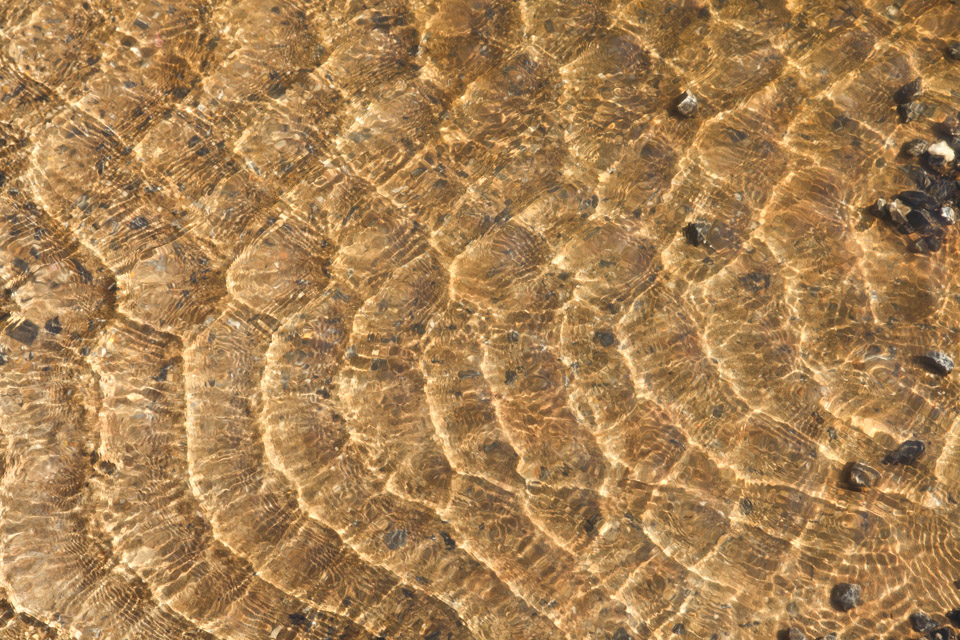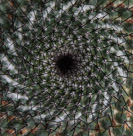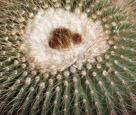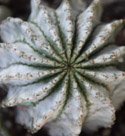This is a picture of the ripples in the water fountain at the National Museum of the American Indian here of on the mall in Washington. You can see the play of the crests and troughs of the waves as the refract the sunlight in reflection off the base of the shallow water in the pool.
A little barrel cactus in the National Batonical Garden on the mall. The pattern of thorn pedistals appears to spiril out from a center point. And if you look closely, all the thorn sets are in similar patterns
Another little barrel cactus. Here you can see the aging is captured in the pattern as well. The white tufts are associated with new thorn pedistals and grow, mature and die leaving a mature thorn pedistal whith thorns is a specific pattern.
And another little barrel cactus example.
Note the fierce thorn pairs on this cactus. They repeate at a regular pattern and the thorn pedistal waves sinuously back and forth creating a pattern of defence that provides the cactus with near 360 degree protection from herbvores.
A couple of things to note here. FIrst notice that each cluster of thorn contains a variety of different sizes of thorns. Each has about the same mix of large, medium, and small thorns to protect from a equally varied set of threats. Then notice the regular spacing of the thorns, the even pattern provides the most efficient protection of the surface with this type of thorn cluster.
Notice the thorns on the ribs of this cactus. The thorns on alternate ribs alternate in protecting the surface of the cactus from herbivores. Very effecient use of space.
Again we see the thorns on the ribs of a barrel cactus.
And another variation. Here the depth between the ribs provides some protection.
And here is a cute little fellow.
Note how the leaves of this succulent come out one by one with no two the same size. At first glance they may appear to be paired like petals on some flowers.They are not. The leaves are calved one at a time in the cactus and they spiral out just like other cactus.
And another succulent. Note that the thorns are strategically placed on the edges as most mature leaves lay flat.
And a tree. When trees are dormant with the leaves off, the patterns and textures that define each species are apparent.
Bark pealing off a tree trunk in the Batonical Garden.
Patterns inthe trunk of a Palm tree.
And the patterns on the trunk of another species of palm tree.
Very interesting pattern on the trunk of this tree.
Leaves provide a wide variety of patterns. The trick is to take pictures of them using transmitted light. That is, with them back lighted. The translucent leaves then reveal their internal structure in the photograph.
A back lighted mature leaf.


























